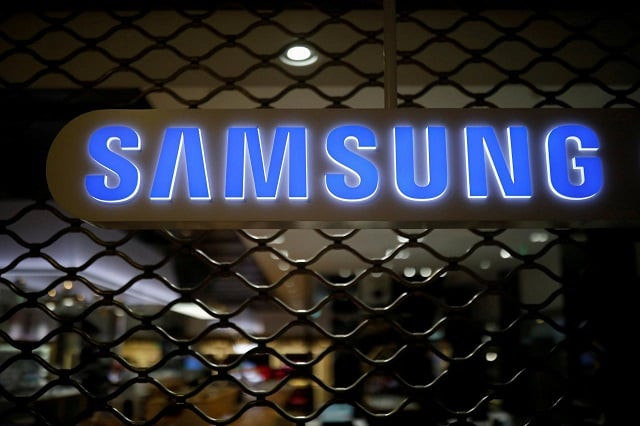Samsung unveils stock split, record profit as chips sizzle
The South Korean giant’s shares surged more than 8 per cent after it unveiled the massive stock split

The logo of Samsung Electronics is seen at its office building in Seoul, South Korea, August 25, 2017.
PHOTO: REUTERS
The South Korean giant’s shares surged more than 8 per cent after it unveiled the massive stock split, saying it wanted to make the company “more accessible and provide dividends to a wider range of investors”.
The upbeat outlook from the world’s biggest maker of memory chips comes as investors look for signs of an end to the massive expansion in the global semiconductor business that has driven profits at chipmakers in recent years.
LG to start operating US washing machine factory in fourth-quarter 2018
“Looking at the mid-to-long term, Samsung expects the components business to see demand expand from new applications,” Samsung said in a statement on Wednesday.
“In the first quarter, the company expects the mobile business to improve its earnings, led by an increase in sales of flagship products with the launch of Galaxy S9.”
Led by a stellar fourth quarter, the company brought home an annual profit of 53.7 trillion won in 2017, outstripping a record of 36.8 trillion won reached in 2013.
Operating profit for the three months ended December rose 64 per cent on year, in line with the company’s forecast, to 15.15 trillion won ($14.13 billion), Samsung said in a regulatory filing.
Earlier this month, Samsung had said it would likely report a record quarterly profit of 15.1 trillion won, but the guidance fell short of consensus estimate at the time, sending shares down as investors worried if this indicated that the memory chip boom could be ending sooner rather than later.
But Samsung shares have recovered about 3 per cent over two weeks, helped partly by a rosy market outlook from SK Hynix, world’s number 2 memory chip maker.
The chip business was Samsung’s top earner last year.
Samsung reported a record profit of 35.2 trillion won in 2017, after more than doubling its profit on-year in the fourth quarter alone.
The company’s mobile division, which competes with Apple reported a profit of 2.4 trillion won in the fourth quarter, a decline from 2.5 trillion won a year prior.
Some Samsung Note 8 devices may have faulty batteries
The outlook for Samsung’s smartphones is uncertain amid competition from Chinese rivals in markets like Europe and Asia, with the mobile division expected to show shipment growth of about 1-2 per cent in 2018 versus 2017, said Tom Kang, research director at data provider Counterpoint.
Samsung’s display business reported a 1.4 trillion won profit in the fourth quarter, up from 1.3 trillion won in the same period last year.
Analysts expect display profits to grow this year thanks to Samsung’s sales of organic light-emitting diode screens for Apple iPhones as well as Samsung’s own handsets.
The company on Wednesday also announced a year-end dividend of 21,500 won per share as part of its previously-announced shareholder return policy.



















COMMENTS
Comments are moderated and generally will be posted if they are on-topic and not abusive.
For more information, please see our Comments FAQ